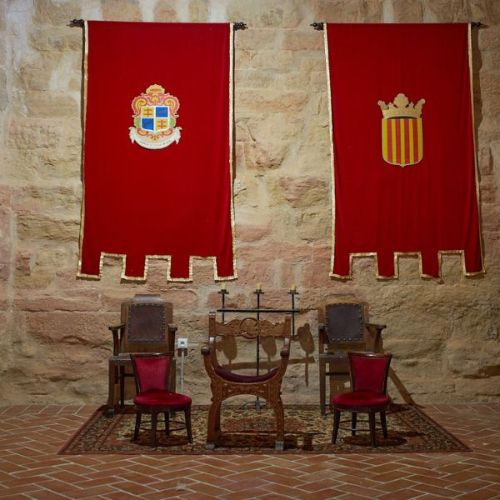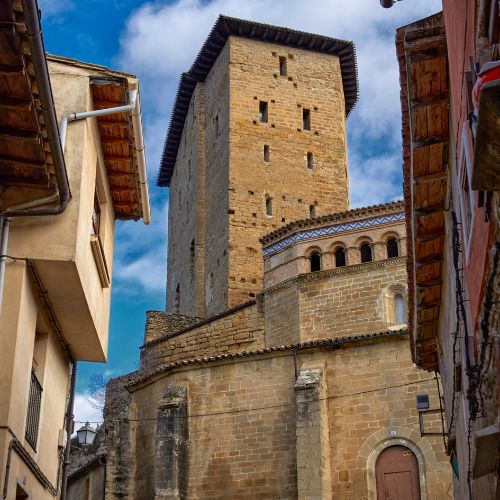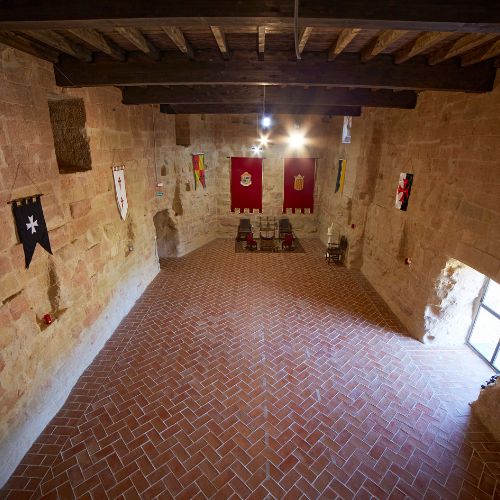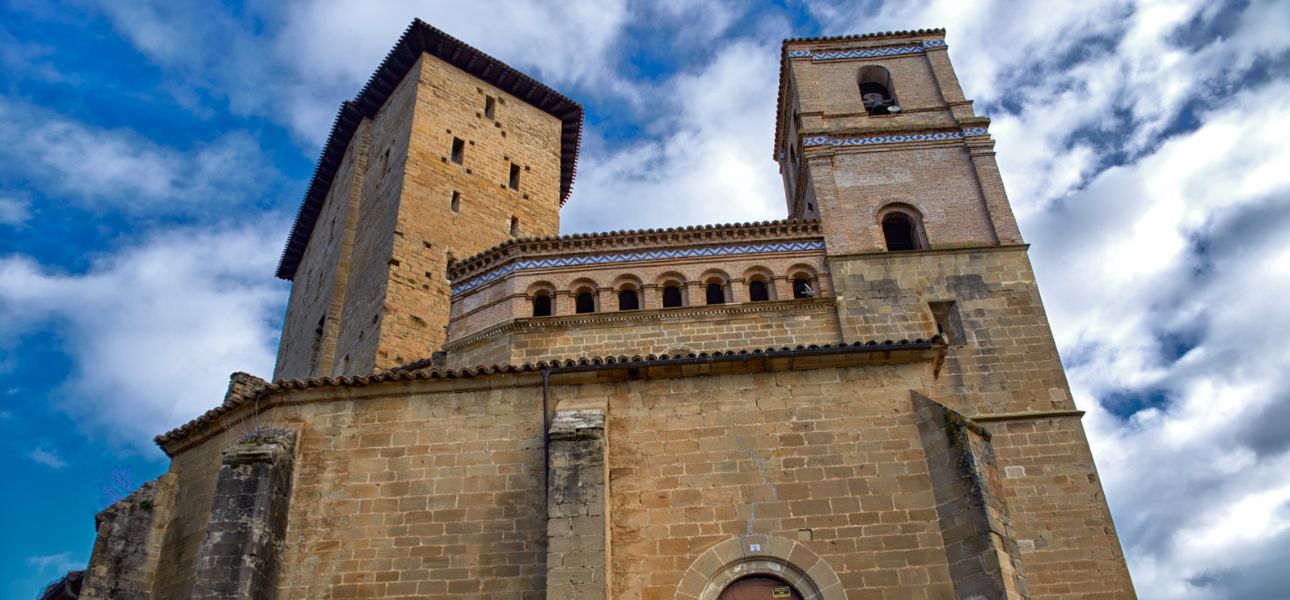Descripción
- Español
- English
- Français
Me encontrarás en la bella localidad de Biel, a los pies de la Sierra de Santo Domingo, a orillas del río Arba de Biel, al cual da nombre. Situado en un valle que se abre a lo largo del cauce del río, destaca el caserío, arracimado alrededor del conjunto arquitectónico que formo junto con la iglesia románica de San Martín de Puebloss. Conformábamos un imponente conjunto militar-religioso, tan típico en época medieval. Mi gran mole destaca sobre el caserío, no en vano fui construido con la función de palacio-fortaleza, en pleno s.XI. Aunque no hay una fecha exacta de la conquista cristiana de la villa, se data en torno a principios del s.X, fecha en la que los reyes pamploneses conquistaron las fortalezas de la zona y la denominaron “Extemadura de los Arbas”, la zona de frontera del reino pamplonés frente a la Taifa de Zaragoza. Mi construcción data del s.XI, en época del rey aragonés Sancho Ramírez, que me entregó en dote a su esposa Felicia de Roucy. Desde entonces aparezco citado como palacio del Rey. De hecho, tengo cierto aire francés, debido a la esposa del rey, que trajo a nuestra tierra los avances y el estilo arquitectónico del vecino reino del Norte. Por mis estancias también corrió y creció el infante Alfonso, futuro rey de Aragón, y desde mi posición iniciaría años más tarde la conquista del valle de Luna, en su camino a la toma de la importante plaza fuerte musulmana de Ejea de los Caballeros.
You will find me in the beautiful town of Biel, at the feet of the Sierra de Santo Domingo, on the banks of the Arba de Biel River, from which I get my name. Located in the valley that the river runs through, this settlement stands out due to the architectural ensemble that I form with the Roman style church of San Martín de Puebloss. We used to be an impressive military and religious complex, commonly seen in medieval times. I stand out over the rest of the village, I was built in the eleventh century to be a palace and fortress. Although there is no exact date of the Christian conquering of the town, it is dated around the beginnings of the tenth century, when the Pamplonan kings conquered the local area and named it “Extemadura de los Arbas”, bordering the Pamplona kingdom and Taifa of Zaragoza. My construction dates back to the eleventh century, at the time of the Aragonese King Sancho Ramírez, who gave me to his wife Felicia de Roucy. Since then, I have been known at the Palacio del Rey. In fact, I have a notable French influence from the King’s wife, who brought the architectural style and advances with her from the neighbouring kingdom in the north. Alfonso, the future King of Aragon, also grew up and was raised in my building, and from here he would start his conquest of the Valle de Luna years later, on his way to take the important Muslim fortress of Ejea de los Caballeros.
Vous me trouverez dans la beau village de Biel, au pied de la Sierra de Santo Domingo, sur les rives de la rivière Arba de Biel, à laquelle le village donne son nom. Situé dans une vallée qui s’ouvre le long du lit de la rivière, le hameau se démarque, regroupé autour de l’ensemble architectural que je forme avec l’église romane de San Martín de Puebloss. Nous constituions un imposant complexe militaro-religieux, très typique à l’époque médiévale. Avec ma structure massive dominant le hameau, je fais honneur à ma fonction de palais-forteresse pour laquelle j’ai été construite au milieu du XIe siècle. Bien qu’on n’attribue aucune date exacte à la conquête chrétienne du village, celle-ci est estimée au début du Xe siècle, moment où les rois de Pampelune conquirent les forteresses de la région et la nommèrent « Extemadura de los Arbas », la zone frontalière entre le royaume de Pampelune et la taïfa de Saragosse. Ma construction date du XIe siècle, à l’époque du roi aragonais Sancho Ramírez, qui m’offrit en dot à sa femme Felicia de Roucy. Depuis lors, j’apparais cité comme le palais du roi. On me devine un petit air français que je dois à l’épouse du roi. En effet, celle-ci apporta les avancées et le style architectural du royaume voisin sur nos terres. L’infant Alphonse, futur roi d’Aragon, a également couru et grandi entre mes murs et dans mes dépendances. Des années plus tard, il commencerait la conquête de la vallée de Luna depuis ma position, pour s’emparer de l’important bastion musulman d’Ejea de los Caballeros.
Foto a Foto





